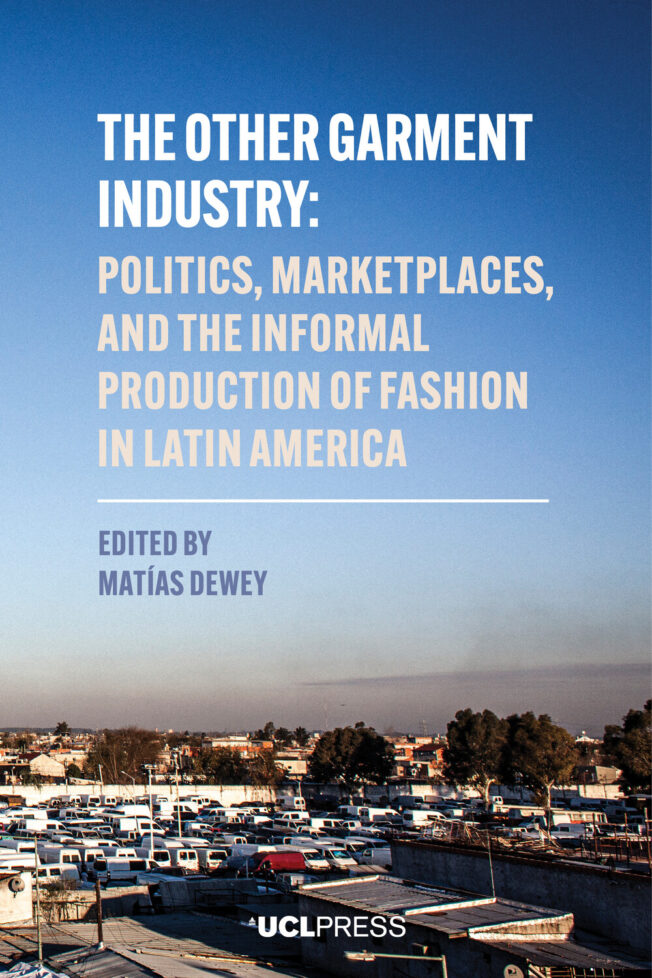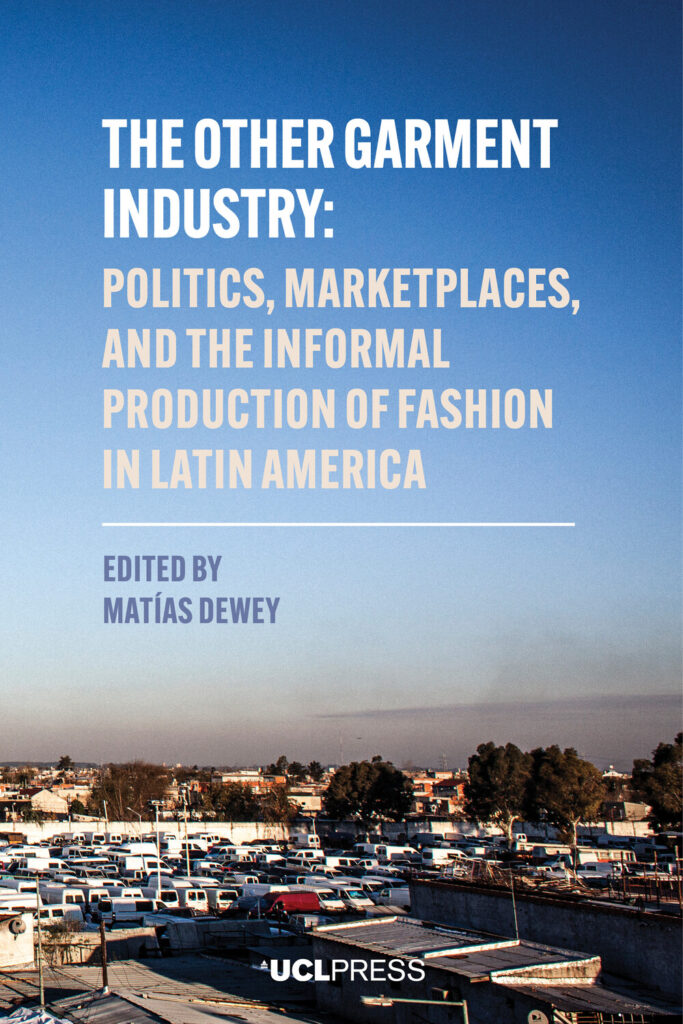
The Other Garment Industry
Politics, marketplaces, and the informal production of fashion in Latin America
Matías Dewey (Editor)
Series: Modern Americas
The Other Garment Industry presents an economic, social, and political phenomenon in Latin America, overlooked in social sciences literature, by introducing a new perspective in the discussion about garment production and distribution. The volume analyses a regional configuration of garment production, distribution, and consumption drastically different from the dominant model of the GVC. This volume is pioneering in providing a holistic account of a specific industrial configuration in Latin America, showcasing this type of economy in Argentina, Brazil, and Peru, and brings examples of trade in neighbouring countries such as Uruguay, Chile, Bolivia, and Paraguay.
The volume focuses on three pillars of this economy: downstream entrepreneurs, informal garment-oriented marketplaces, and extended routes of national and regional trade. Regarding the downstream entrepreneurs, one of the main differences concerning the dominant understanding of the dynamics of the garment industry is a diverging division of labour. Sweatshops are not just the site of repetitive and uncreative labour (while creativity and design are tasks of brands) but quite the opposite: the productive units are dedicated to organising labour around consumer preferences and imaginaries. The distribution occurs through large informal marketplaces specifically oriented to the sale of garments. Garment-oriented marketplaces and extended informal trade routes are crucial to shortening distribution chains, reducing costs, and providing the population with access to low-cost fashion items.
List of figures
List of tables
List of contributors
1 Uncovering a regional system of informal garment provision: an introduction
Matias Dewey
Part I: Explaining low-priced fashion
2 Drivers of informality in the Latin American garment sector: regulation, compliance and law enforcement
Matías Dewey
Part II: The downstream sweatshop
3 Creative copying: modinha and the dynamics of innovation and imitation
Thalita Calíope and José Carlos Lázaro
4 The rise of entrepreneurship in Pernambuco’s informal garment marketplace: narratives, practices and history
Renata Milanês
5 Provincializing ethical and sustainable fashion: learning from Guatemala’s informal garment sector
Kedron Thomas
6 Cooperation in a neoliberal production landscape. Bolivian workers in Buenos Aires’ garment industry
Karlotta Jule Bahnsen
Part III: Garment-oriented marketplaces
7 ‘I’ve been coming to Brás for thirty years’: resilient sociotechnical infrastructures of production and trade in an enduring garment district
Andre Vereta Nahoum
8 Taming informal market violence: clashes and structure in the making of La Salada and other gray marketplaces
Jacinto Cuvi and Javier Auyero
9 Constructing a marketplace: real estate business and government in Gamarra, Lima
Moisés K. Rojas
10 Governing informality: the case of La Cachina Fashion in Lima, Peru
Francesco Ginocchio
Part IV: Trading garments
11 Beyond global chains: informal wholesale clothing circuits and production in Argentina
Gustavo Ludmer
12 Trading garment at night: practices and aspirations in informal commerce
Felipe Rangel
13 Second-hand clothing in the style of Monterrey, Mexico
Efrén Sandoval
14 Never quite formal: growth and constraints of Korean wholesale enterprises in the Argentine garment industry
Jihye Kim
Index
DOI: 10.14324/111.9781806550906
Number of illustrations: 8
Publication date: 01 June 2026
PDF ISBN: 9781806550906
EPUB ISBN: 9781806550913
Hardback ISBN: 9781806550883
Paperback ISBN: 9781806550890
Matías Dewey (Editor) 
Matias Dewey is Associate Professor of Latin American Studies at the University of St. Gallen.
Postdigital Intimacies
Adrienne Evans, Jamie Hakim, Jessica Ringrose, Amy Shields Dobson, Shaka McGlotten,
16 March 2026
The Chronopolitics of Life
Nolwenn Bühler, Nils Graber, Victoria Boydell, Cinzia Greco,
04 December 2025
Evaluating Anti-Trafficking Interventions
Ella Cockbain, Aiden Sidebottom, Sheldon X. Zhang,
18 November 2025
Revisiting Childhood Resilience Through Marginalised and Displaced Voices
Wendy Sims-Schouten,
11 February 2025
Schooling for Refugee Children
Eleanore Hargreaves, Brian Lally, Bassel Akar, Jumana Al-Waeli, Jasmine Costello,
07 May 2024
Social Research for our Times
Claire Cameron, Alison Koslowski, Alison Lamont, Peter Moss,
06 November 2023
The Other Garment Industry
Politics, marketplaces, and the informal production of fashion in Latin America
The Other Garment Industry presents an economic, social, and political phenomenon in Latin America, overlooked in social sciences literature, by introducing a new perspective in the discussion about garment production and distribution. The volume analyses a regional configuration of garment production, distribution, and consumption drastically different from the dominant model of the GVC. This volume is pioneering in providing a holistic account of a specific industrial configuration in Latin America, showcasing this type of economy in Argentina, Brazil, and Peru, and brings examples of trade in neighbouring countries such as Uruguay, Chile, Bolivia, and Paraguay.
The volume focuses on three pillars of this economy: downstream entrepreneurs, informal garment-oriented marketplaces, and extended routes of national and regional trade. Regarding the downstream entrepreneurs, one of the main differences concerning the dominant understanding of the dynamics of the garment industry is a diverging division of labour. Sweatshops are not just the site of repetitive and uncreative labour (while creativity and design are tasks of brands) but quite the opposite: the productive units are dedicated to organising labour around consumer preferences and imaginaries. The distribution occurs through large informal marketplaces specifically oriented to the sale of garments. Garment-oriented marketplaces and extended informal trade routes are crucial to shortening distribution chains, reducing costs, and providing the population with access to low-cost fashion items.

